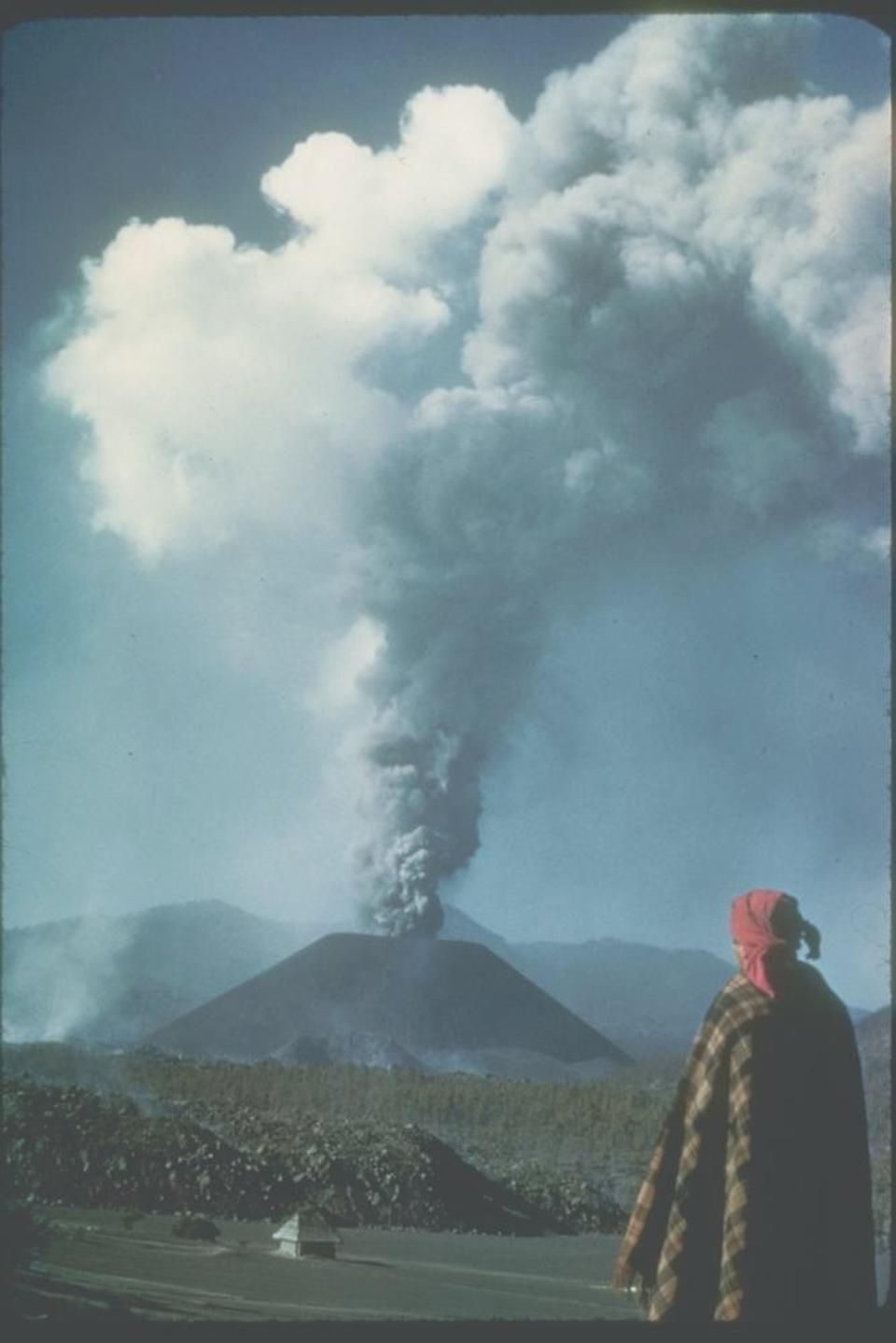This was a unique opportunity and the volcano of Parícutin, named after a nearby village, captured the interests of scientists as of the general public. Mineralogist William Foshag of the U.S. National Museum documented the growth of the volcano one month after its birth and he was even featured (together with the volcano) in the Life magazine. Hollywood filmed some scenes of the 1947 movie "Captain from Castile" around the active Parícutin. Even airplanes, flying from Los Angeles to Mexico City, diverted from their regular route to catch a glimpse of the ongoing eruption.
The Parícutin, which reached a total height of 1,391 feet, was most active in its first year. Its eruption style changed over time. After ash had fomed a 1,000 feet high cone, also lava started to pour out from the fissures. The lava buried the surrounding town of San Juan Parangaricutiro, leaving only the church steeple sticking out of the rocks.
The entire area was evacuated in time and the eruption claimed no victims. The volcano continued to erupt until March 1952 when the eruption ceased as suddenly as it started.




Reader Comments